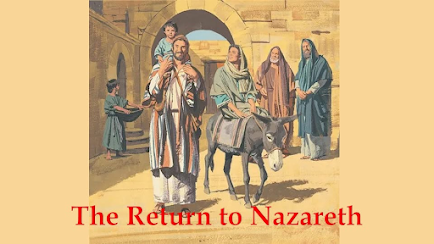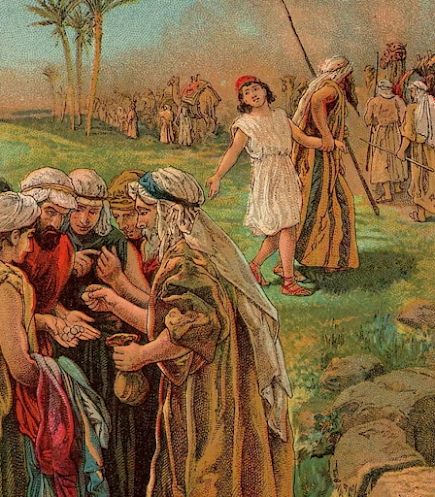In
today’s Gospel, Jesus explains the importance of being with Him,
compared to doing things for Him. Jesus told Martha, “Martha,
Martha, you are anxious and worried about many things. There is need
of only one thing. Mary has chosen the better part and it will not be
taken from her.”
The
better part was to be with Jesus. This reminds us of Eucharistic
Adoration, where we are with
Jesus and
gaze upon Him in the Sacred Host and listen to Him.
People
gaze upon things and listen
to others through
Phones, computers, I-pads,
videos, movies, television.
We listen or watch podcasts and hours of videos.
Some
are spiritually good like, The Bible in a Year
or the Catechism in a Year with Fr. Mike
Schmitz. There is EWTN, the Catholic cable television network, that can be
watched live on the Internet. In Kansas, we have Divine Mercy radio,
with many Catholic programs. Back in April, Divine Mercy Radio out of
Hays and Salina asked me to do a live podcast on my book “The
Miracles of the Rosary and the Rosary of Miracles.” At first I
told them, no. But after prayer, I decided, I needed to go out of my
comfort zone, to promote the Rosary. I was live on the radio and they
later re-aired the program at 101.7 FM. The podcast can be found on
YouTube.
There
are spiritually good things to learn about our faith, but there are
things that can harm our soul and our faith.
In
March of every year, the diocese asks priests to preach on Safe
Haven Sunday. Its a weekend where the priest preaches on helping
parents to make their home a safe haven from technology evils. I
dropped the ball. So this weekend, I am going to speak about it. Last
year, we gave away booklets and information to read and suggested parents talk to their children about the topic of pornography.
In
the bulletin there are practical ways to help those who suffer from
pornography. It can develop into an addiction, and be very difficult
to stop.
The
Church has many ways to help, but we need to be aggressive and truly
want to stop the habit. How bad is this problem? The organization
Covenant Eyes helps parents protect and monitor their
children, said, “One study found that 90% of children ages
8 to 16 have viewed pornography online.” This
shows the great
need for parents to help
their children avoid seriously sinful images that can affect their
innocence and disturb their consciences. The phone, the internet,
television, movies are all portals that can seriously
harm children and cause them
to sin.
We
want our children to succeed in life. We watch over and help them
with their school activities, academics, sports, art, music. We form
our children to be good upright adults, who will provide for their
own livelihood, future family and contribute to the common good of
society. We help them to attend college or a vo-tech school or learn
a specific trade or work. These are all very important, but their
spiritual life is most important. Only Jesus can save us and bring us
to heaven. Attending Mass, going Confession regularly, PSR, reading
the Bible, praying the Rosary, fasting weekly, making Holy Hours
before Jesus in Adoration are ways God can help us. Parents teach
their children how to make good decisions for themselves and teach
them how to pray, and teach them about the faith and morality.
Children need to learn about developing a personal relationship with
Jesus, by daily praying to Him, seeking His help and turning to Him
for mercy and forgiveness. Jesus helps us to love others and do good
things for others.
The
last time I was in an airport, I noticed almost everyone had their
heads down gazing upon and listening to their phones. Perhaps they
were communicating with friends and family, others playing video
games, still others watching videos, checking out Facebook, tic tok,
Instagram, and all the many social platforms.
When
we gaze upon and listen to sites that can harm our soul, we are
allowing the devil to influence us. Parents may be shocked to hear
how easy it is for children to watch pornography, to play occult
games that can cause demons to attack the child, the family and the
home by viewing these things. They can watch satanic videos, play
witchcraft, do Ouija board, tarot cards, all online. I met a young
man who became possessed by playing tarot cards. Occult games can
cause depression, transgender confusion, attractions to persons of
the same gender, temptations to steal, cause anger, hatred, jealousy,
isolation, and so many things that can negatively affect their
spiritual life and mental health.
Men,
YOU are the protectors of the family. You need to man-up and make
sure your children are protected. There
is hope with websites like Covenant
Eyes and
there are parental control apps. There is a website where you can use
GPS to track your children anywhere in the world. It’s called
www.FindMyKids.org. The information on how to block 65 +
inappropriate and dangerous websites is in the bulletin.
https://findmykids.org/blog/en/list-of-websites-to-block
In
the bulletin is a list of ways to overcome pornography habits and
addiction. I encourage parents and especially fathers to discuss this
with their sons. You can make copies and give to your friends for those who struggle with these sins.
It
takes time to develop a habit and it takes time to get out of it. It
takes perseverance and patience. The Lord understands you are trying
your best, but keep falling. Don’t lose hope, rather immediately
turn to Jesus. Don’t give up. Keep trusting in His mercy. Run to Jesus in Confession as a child would run to a parent when injured, to receive healing and consolation.
Here
are some tips: Download the Covenant Eyes app., Fast every week to
control your pleasures. We should not allow the body to have what it
wants, when it wants it. Before he became a priest, Fr. Don Calloway
had a pornography addiction. He said if you pray 3 Rosaries a day,
the Virgin Mary will help anyone pull out of the addiction. St.
Anthony of Padua said to pray 3 Hail Marys a day in honor of Our
Lady’s purity and asking Her for the gift of purity and One will become
more pure if you do. St. Padre Pio said everyone should confess once
a week. Confession not only forgives sins, it also gives graces to
prevent sin. If anyone falls into mortal sin, immediately go to
Confession before receiving Holy Communion. In the bulletin, there
are specific daily prayers you can pray in the bulletin. You can seek
out an accountability partner, someone you know and trust, who can
ask to watch over you. As soon as a temptation occurs immediately
turn your mind on something else and pray the Hail Mary or Our Father
audibly for your spouse or your family. Bless your home regularly,
especially if someone in your home has viewed pornography and played
occult games. Demons can stay in locations where sinful activities
occur. Regularly bless rooms with Holy Water, display wall crucifixes
and sacred images for protection.
Parents,
there are adult predators, pretending to be a teen, and try convince
them to do sinful things through phones. They blackmail them and
threaten to tell others. I will send out an email about what happened
in Eldorado, but something similar has happened within our own area.
https://www.kwch.com/2025/07/17/he-died-terrified-el-dorado-teens-death-connected-sextortion-scheme-mother-says
It
is wrong to gaze
upon images of people through
technology
for
false
self-satisfaction
and view
others, not as loving and caring people, but rather objects of
pleasure. Technology
without personal relationships causes
isolation and loneliness. Viewing
pornography is
false love.
It’s fake love. Its the devil’s tool to break up marriages, to
cause one to commit mortal sin, to become
selfish. To break apart families. Jesus
said, “...I
say to you that whoever looks at a woman lustfully has
already committed adultery with her in his heart.” (Matthew
5:28)
But,
with the help of Jesus and the means His
Church has given us, we
can pull
out of sin. We should
have relationships
with real people in our life. How
beautiful to see each
person, who we know, and love, and talk to, walk with, hold hands,
care for, and sacrifice
our lives.
Jesus
said, “Blessed
are the pure of heart, for they shall see God.” (Matthew
5:8) If
we have a pure heart, we
will see God in each other, and
view
people
with
real feelings and in personal
manner, created in God’s image and likeness. It takes manly courage
to turn away from sin and to be faithful to one’s spouse, and
faithful to God.
Finally,
I would to encourage all families to daily
pray the Rosary together, and
bring your
children to Eucharistic Adoration regularly.
There they will be like Mary, and sit in silence at the feet of
Jesus, gazing upon God who is the
source of all love
for
His love
is infinite and
endures forever. For
by doing so, you will have chosen the better part.













